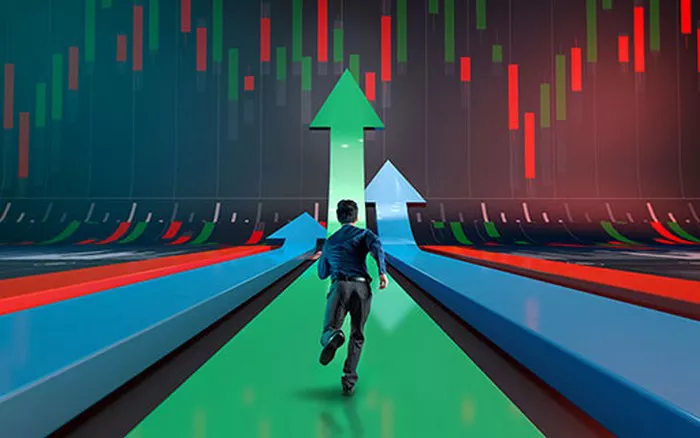Futures contracts serve as essential tools for investors and traders to hedge against risk, speculate on price movements, and gain exposure to various asset classes. However, not all futures contracts exhibit the same level of volatility. Some contracts are known for their high levels of price fluctuations and market turbulence, presenting both opportunities and risks for market participants. This article delves into the most volatile futures contracts, examining their characteristics, factors driving volatility, and implications for traders and investors.
Introduction to Volatility in Futures Trading
Volatility refers to the degree of price fluctuations or variability observed in the price of a financial instrument over a specific period. In futures trading, volatility plays a crucial role in determining risk and potential returns. Highly volatile futures contracts often attract traders seeking opportunities to profit from price swings but also entail higher risks.
Criteria for Determining Volatility
Historical Price Movements
Analyzing historical price movements is a key method for assessing volatility in futures contracts. Contracts with significant price fluctuations over time are considered more volatile compared to those with relatively stable price trends.
Standard Deviation
Standard deviation, a statistical measure of dispersion, is commonly used to quantify volatility in financial markets. Futures contracts with higher standard deviations in price returns exhibit greater volatility, indicating greater uncertainty and variability in prices.
Option Implied Volatility
Option implied volatility, derived from options pricing models, provides insights into market expectations for future price movements. Higher implied volatility levels suggest increased uncertainty and potential for price swings in futures contracts.
Most Volatile Futures Contracts
VIX Futures
VIX futures, based on the CBOE Volatility Index (VIX), are among the most volatile futures contracts available. Often referred to as the “fear gauge,” the VIX measures market expectations for future volatility in the S&P 500 Index. VIX futures allow traders to hedge against or speculate on equity market volatility.
Crude Oil Futures
Crude oil futures contracts are known for their high volatility, driven by factors such as geopolitical tensions, supply-demand dynamics, and macroeconomic factors. Price swings in crude oil futures can be significant, presenting opportunities for traders but also posing risks due to market uncertainty.
Natural Gas Futures
Natural gas futures contracts exhibit notable volatility, influenced by factors such as weather patterns, storage levels, and production trends. Seasonal demand variations and unexpected supply disruptions can contribute to sharp price movements in natural gas futures.
Gold Futures
Gold futures contracts, tied to the price of gold bullion, can experience periods of heightened volatility driven by geopolitical uncertainties, inflation expectations, and currency fluctuations. Safe-haven demand for gold during times of economic uncertainty can contribute to volatility in gold futures.
Bitcoin Futures
Bitcoin futures contracts, introduced in recent years, are characterized by significant price volatility inherent in the cryptocurrency market. Factors such as regulatory developments, technological advancements, and market sentiment can contribute to sharp price swings in bitcoin futures.
See Also: How does futures rollover work?
Factors Driving Volatility
Market Sentiment and Speculation
Market sentiment and speculative activity can drive volatility in futures contracts. Sentiment shifts, driven by news events, economic data releases, or geopolitical developments, can trigger sudden price movements as traders adjust their positions.
Supply and Demand Dynamics
Supply and demand imbalances can contribute to volatility in futures markets. Changes in production levels, inventories, or geopolitical tensions can disrupt supply chains and impact commodity prices, leading to increased volatility in related futures contracts.
Macro-Economic Factors
Macroeconomic indicators and policy decisions, such as interest rate changes, inflation reports, and fiscal policies, can influence volatility in futures markets. Economic uncertainty or shifts in policy expectations can lead to heightened volatility as market participants reassess their positions.
Implications for Traders and Investors
Opportunities for Profit
Highly volatile futures contracts present opportunities for traders to profit from price swings through active trading strategies such as day trading, swing trading, or volatility trading. Traders can capitalize on short-term price movements and market inefficiencies to generate returns.
Risk Management Challenges
While volatile futures contracts offer profit potential, they also entail higher risks and challenges for traders and investors. Managing risk becomes crucial in volatile markets, requiring effective risk management strategies, position sizing, and stop-loss orders to protect capital.
Diversification and Hedging
For investors seeking to hedge against volatility or diversify their portfolios, exposure to volatile futures contracts may offer benefits. Diversifying across asset classes with different risk-return profiles can help mitigate overall portfolio volatility and enhance risk-adjusted returns.
Conclusion
The most volatile futures contracts play a significant role in financial markets, offering opportunities for profit and risk management for traders and investors. By understanding the criteria for determining volatility, the factors driving volatility, and the implications for market participants, traders can navigate volatile futures markets with confidence and capitalize on trading opportunities effectively. While volatile futures contracts present both challenges and opportunities, they remain essential instruments for price discovery, risk management, and portfolio diversification in the global financial landscape.


